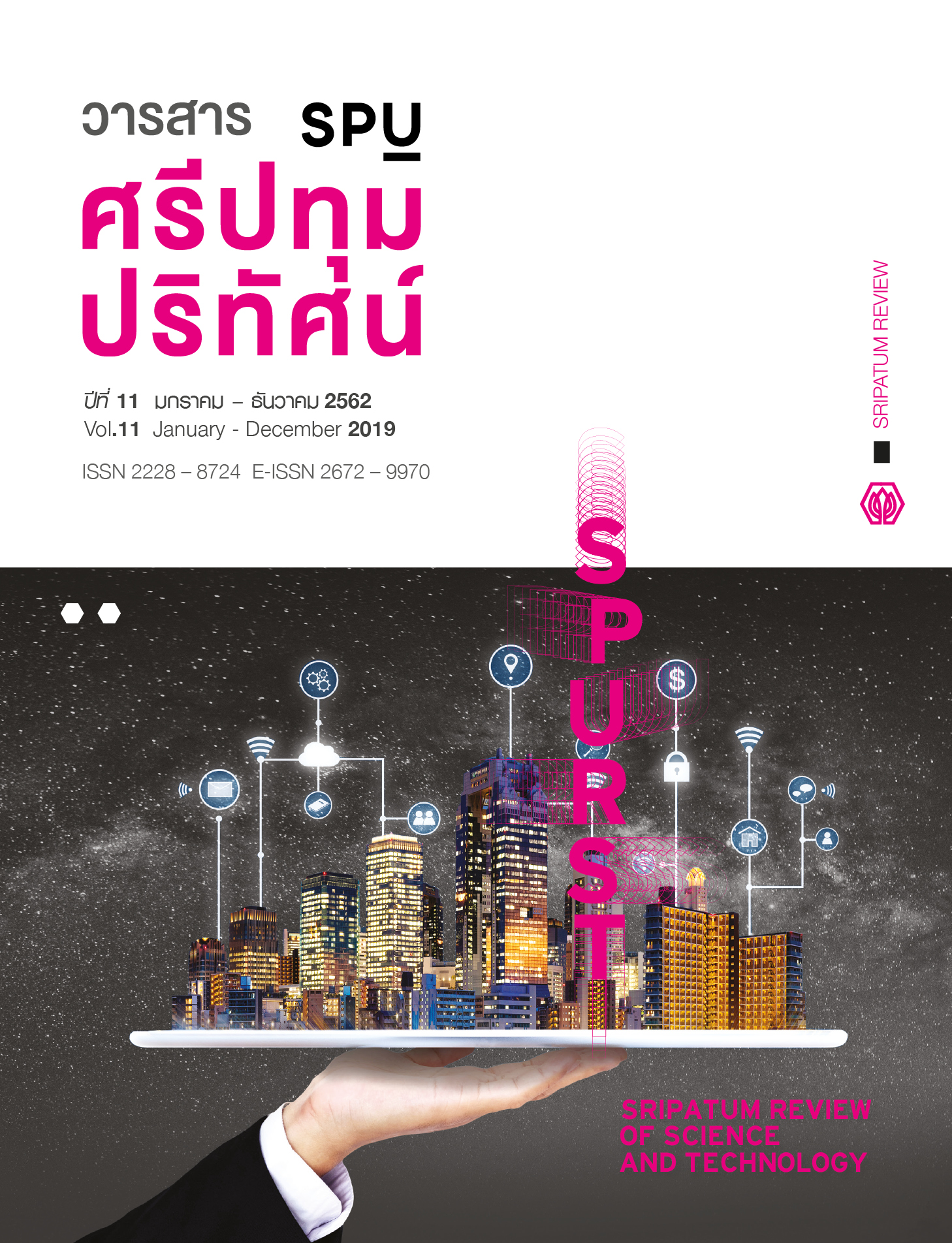แอปพลิเคชันบนมือถือสำหรับดูแลผู้ป่วยเบาหวานการศึกษาพฤติกรรมในประเทศไทย (Smartphone Application for Diabetes Behavior Study in Thailand)
Main Article Content
Abstract
The objectives of this research were to study 1) the self-care situations of patients with diabetes for the application design 2) the satisfaction of using the application for diabetes and caregivers. The samples in this research are 60 diabetes which divide in two groups are control group and experimental group with each group have 30 patients. The experimental group is the group that use the application and the control group is the group that take care by health service providers. The questionnaire and the interview instruments were designed to clarify participants’ attitude and used a five point Likert scales, in-depth interviews, observation, group’s discussion and documentary study. The entire reliability value is 0.72 and IOC (Item-Objective Congruency) is 0.55. The statistics used for data analysis were percentage, mean and standard deviation.
The result disclose as follows: 1) The study of self-care situations of patients with diabetes for the application design found that developing an application on the android operating system for patients and caregivers consisted of 11 main screens, including Main Screen, Personal Information, Body Mass Index Calculation, Frequently Asked Questions, Nutrition, Medication Taking, Exercise Control of Emotions, Health Problems, Graphs, and Logout. 2). the satisfaction towards the application usage in the experimental group was divided into five categories: 1: application design and configuration; 2: installation process, and understanding in using the application; 3: overview of the application; 4: theme and image of the application; and 5: application usage. It was found that for 3: overview of the application, the satisfaction towards the application of most patients with diabetes was in the highest level (X= 3.53, SD = 0.64).
Article Details
References
Jirawatanakul, S., (2012). Qualitative research in nursing: Research Methodology and case study. Bankrapi, Bangkok: Wityapat. (in Thai)
Plachaipiromsil, S. (2012). Usages Trend of Mobile Application. Administrative Journal. 30(3), 110-115. (in Thai)
Polit, D.F. and Beck, C.T. (2004). Nursing Research: Principles and methods. 7th ed. Philadelphia: Lippincott & Wilkins.
Sangdung, S. (2017). Self-Care Behaviors of Diabetes Patients who cannot control themselves. The Southern College Network Journal of Nursing and Public Health. 4(1) January- April 2560, 191-204. (in Thai)
Sinloyma, P., (2018). Research Framework. Retrieved on October 2018 from http://ajarnpat. com/data/document_study02 (in Thai)
Siripanuvong, S. (2017). App Launches Welding Doctor with Patient Real-time kidney disease treatment reduces costs. Retrieved on December 2017 from https://www.kku.ac.th/news/v.php?q= 0013780&l=th (in Thai)
Vaidya et al. (2013). A smart phone/tablet based mobile health care system for developing countries. IEEE Engineering in Medicine and Biology Society. Annual Conference 2013; 4642-5.
World Health Organization [WHO]. (2018). Ottawa charter for health promotion, health promotion action means: Build healthy public policy. Retrieved on October, 2018, from http://www.who.int/ healthpromotion/conferences/previous/ottawa/en/index1.html


